The cab driver taking me from Jerusalem to Bat Ayin assures me that he knows where I want to go. “I bring a lot of people to the Ruts’,” he tells me in a thick Israeli accent. I wonder if we are talking about the same people.
“Rhodes,” I say.
“Yes, yes, Ruts.”
He drops me off in front of a handmade sign nailed to a tree. The sign reads, “Beit Lubavitch.” I’ve come to the right place.
The home of Miriam and Meir Rhodes is tucked inconspicuously beneath wild overgrowth, but thirsty travelers find it all the same. Perched in the Judean Hills just south of Jerusalem, this rugged oasis, untouched by the big city, is a magnet for spiritual seekers. Except for a donkey braying on a rocky hilltop and the rustle of a cool breeze blowing off the mountain in the hot sun, Bat Ayin’s quiet is nearly perfect. Time stands still. Cold springs flow underground.
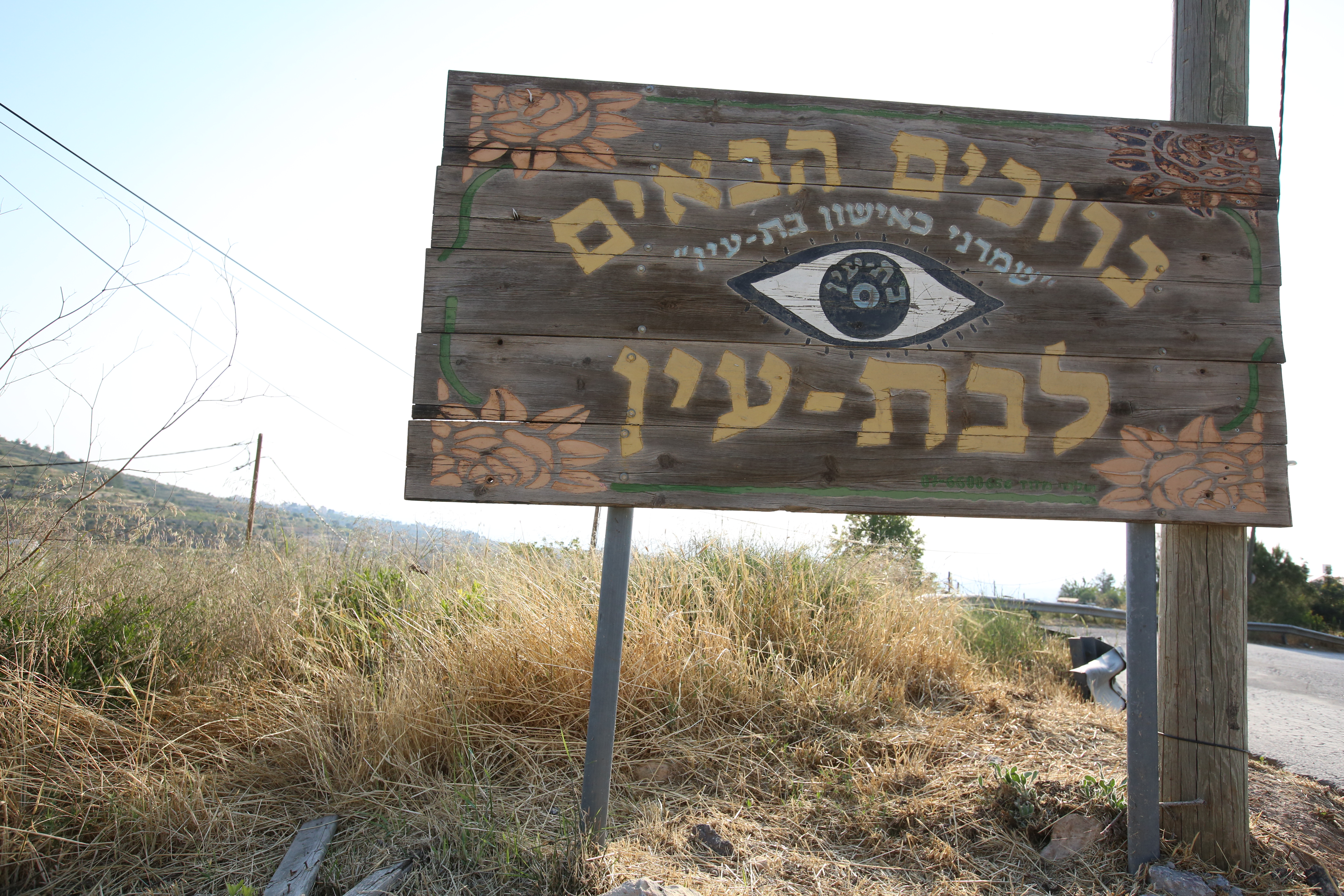 Welcome to Bat Ayin
Welcome to Bat Ayin
I find Miriam and Meir sitting outside, imbibing the hushed tranquility as if for the first time. After sixteen years, they are yet in awe of the history that hugs them from all sides. The redwood deck of their rustic country home looks out on the Mediterranean Sea to the west and Jerusalem to the north. A bald patch when they moved here, it is now green with grapevines that grow obediently along loquat and pomegranate trees. Meir points to a road below where Abraham and Isaac once trekked in silence from Hebron to Mt. Moriah.
MEIR
This is all a long way off from Crown Heights of the 1980s where a six-foot-tall redhead teacher with a yarmulke on his head walked into the lunchroom of an all black public school to the chants of “Jew! Jew!” It was the first day of school.
Five hundred eyes stared hard. “That’s the greatest compliment you could pay me,” Meir said, with unfeigned delight. A third-grade teacher at PS 221 on Empire Boulevard, he owned the gritty streets of the neighborhood’s east side along Utica Avenue. “I’d been to Bombay and seen some rough towns in my life. But this was the roughest.”
Born in Milwaukee to a non-observant family, Meir attended UC Berkeley where he became active in the civil rights movement. A campus radical, he railed against a corrupt system. He got involved in yoga and Eastern spirituality. “I traveled to India when there weren’t many Westerners there.”
After living there for some time (“too long”) Meir returned to the West, hustling for odd jobs that would finance his return to India. He worked as a dishwasher, a school teacher, a cleaner. He did five-day runs as a merchant seaman for Cleveland Cliffs Mining Company, taking oar boats across the Great Lakes from the Mesabi Range to Canada. “It was good money,” he says.
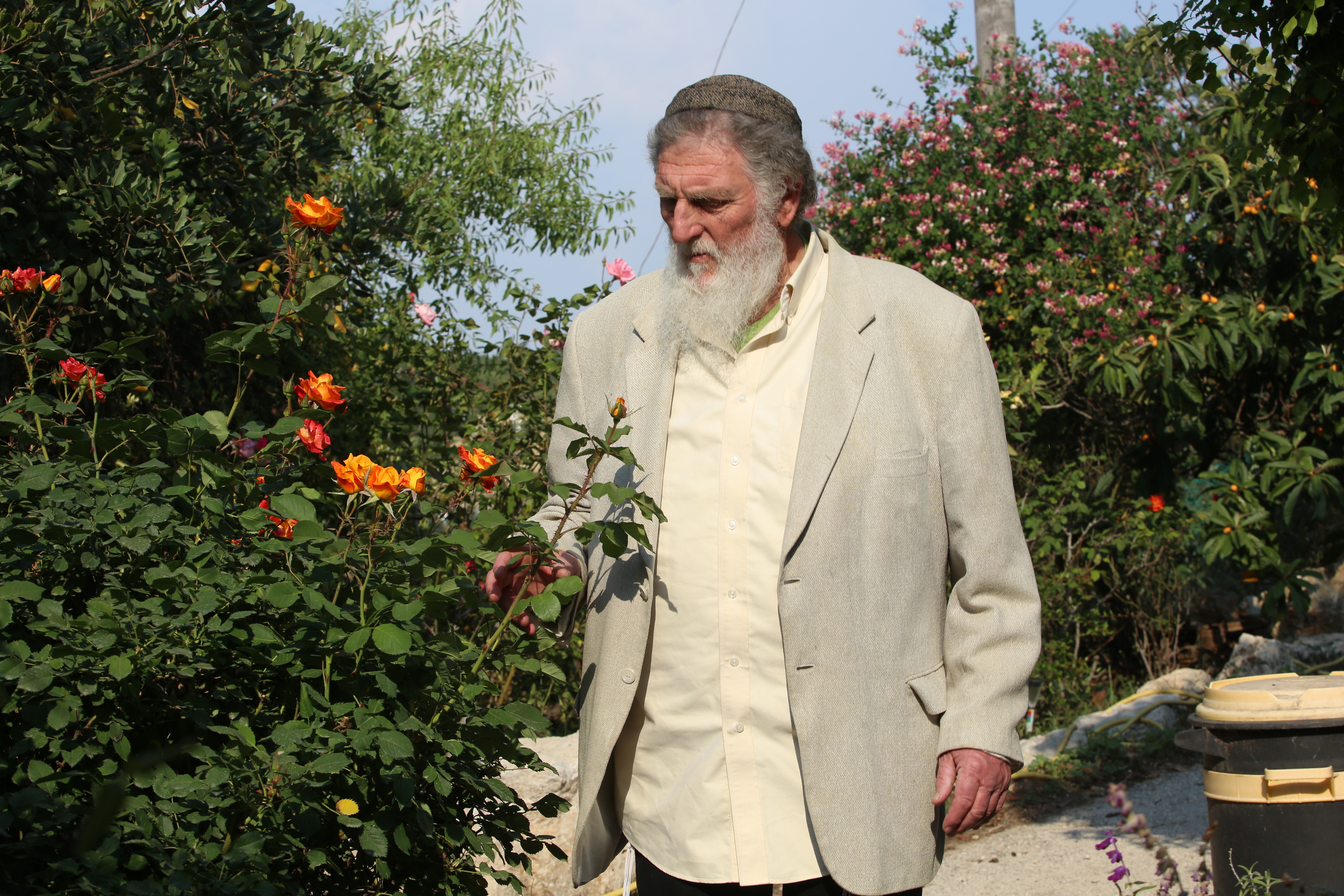
Even now, at seventy-seven, the outdoorsman who picks up neighboring Palestinian hitchhikers in his rickety old car and talks to them about making peace with his presence, exudes a thoughtful kind of chutzpah. The fragments he offers about his lifelong quest for emes (truth) tell me that his reputation for living on the edge is honestly earned.
Meir never returned to India. I ask why. “The Yom Kippur War,” he says, his clear blue eyes looking out to the horizon. “Like Jonah, I got spewed out from this ship and wound up in Israel.”
He lived on a kibbutz for five months. Then, when Passover came, something made him look for a seder. “The soul was moving already,” he says.
He’d encountered Chabad at Berkeley and now made his way to the town of Kfar Chabad, where someone laid tefillin on him. “It had a profound effect on my psyche.” The same, he says, happened when he donned tzitzit for the first time.
1974
Meir was thirty-three when he met some of the legendary Chasidic personalities of Kfar Chabad. Survivors of communism, the Gulag and KGB interrogators, they straddled two worlds, tethered to a spiritual truth with their feet on the ground. Meir beheld emes.
He applied to study at a baal teshuvah yeshivah in Kfar Chabad. Alas, they wouldn’t accept him. “I was a sailor. Too old. Too wild.” So he went to study Talmud “with the Litvaks in Bnei Brak.” It was good. It wasn’t enough.
“I came to Chabad for courage,” he says. Always pushing the limits, he wanted more; a greater experience of life, a deeper connection to G-d. “Chasidim are mystics. And to a mystic, the difference between physical and spiritual is not so great. We live in many worlds.” Meir was reaching for higher realms.
On a brief visit to Milwaukee after his father died, Meir contacted the local Chabad. “Rabbi Israel Shmotkin arranged kosher food for me during the shivah.” Meir had a one-way ticket back to Israel, but the rabbi bought him a ticket to New York with the promise that if Meir decided he didn’t want to stay in Crown Heights, the rabbi would pay his fare back to Israel. It was a portentous detour.
MIRIAM
Miriam brings drinks out to the porch. Her shy demeanor and gentle warmth are foil to her husband’s trenchant wit. A biochemistry major at Cornell, she won a fellowship for a PhD in ecology at UC Berkeley, but dropped out to “search for truth.” Traveling solo, she hitchhiked her way through Europe, exploring Eastern traditions in India and practicing Tibetan meditation, all of which, she reflects, left her with a big ego. “One needs many years of studying Chasidut to chip away at the ego.”
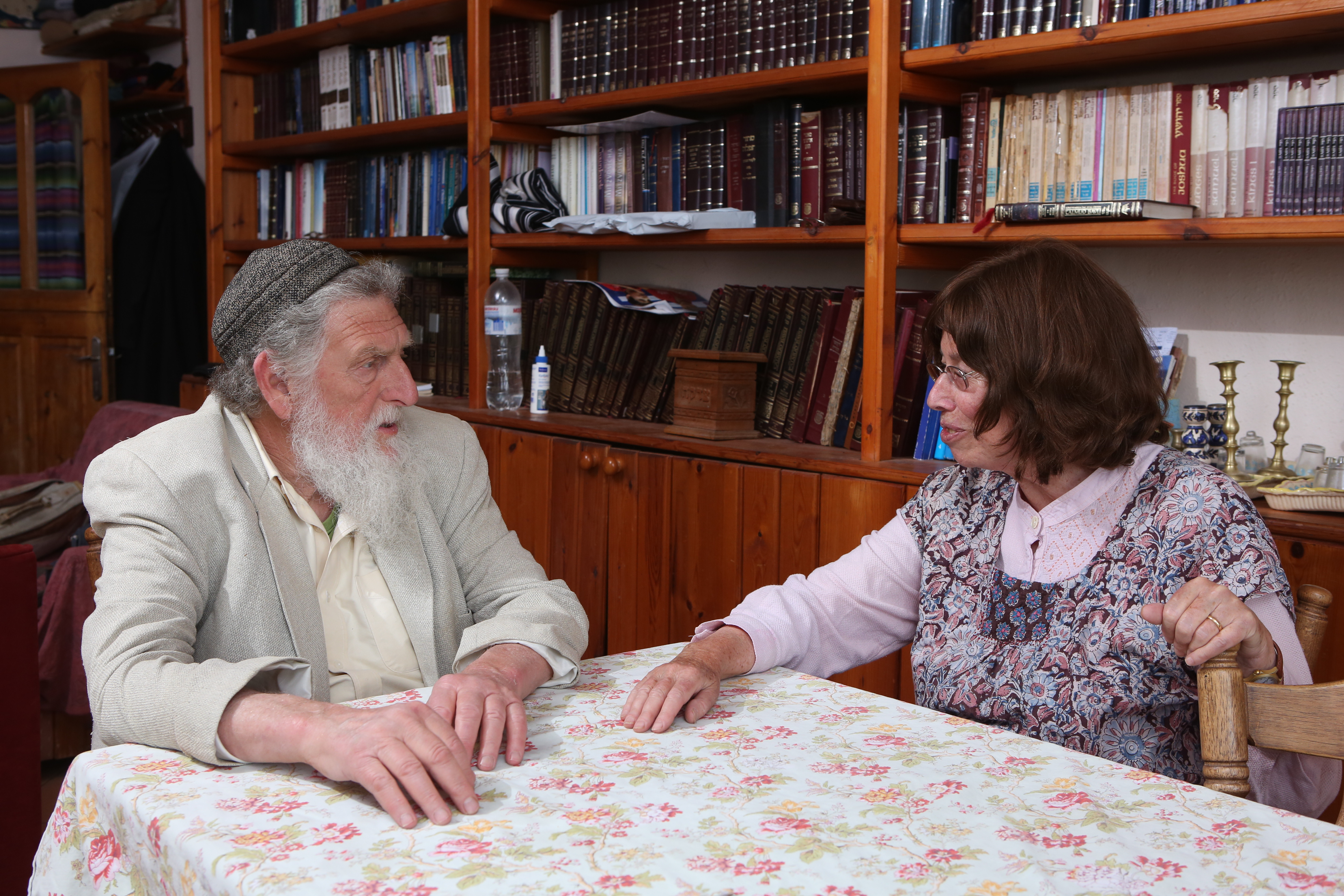 Miriam and Meir at the dining room table in their Bat Ayin home
Miriam and Meir at the dining room table in their Bat Ayin home
Returning from India in 1974, Miriam had the idea to try Passover in Crown Heights (she was born there, but her family had no contact with Chabad or religious life). She participated in the Passover seder at Machon Chana (a school for women new to Judaism), where forces conspired to make her stay on. In a departure from his routine, the Lubavitcher Rebbe unexpectedly visited the women at Machon Chana that Passover eve. “I had an eye for holy people,” Miriam says with a chuckle.
Moved to change her plans, she stayed long enough to learn about Shavuot. She had never heard about the holiday. “I soon realized that either the rabbis had been brainwashing people for thousands of years or there was a unique historic event—the giving of the Torah.”
After a quiet pause she adds, “My travels have taught me that all life experiences wash the brain.” The world traveler who’d mastered spiritual traditions of the East discerned something in Brooklyn that was different. “Of all the experiences I’d had, being a Chasid of the Rebbe seemed like a good way to wash your brain.”
It is the week of Yom HaShoah. Reminders of the Holocaust are everywhere. How to reconcile a theology that insists on the benevolence of Divine Providence in the face of this evil? Miriam teaches Chasidut to a following of women in Jerusalem and Bat Ayin. She refers to Tanya, chapters 26 and 27, which discuss the challenge of objective suffering. The suffering is real. G-d’s goodness is real. “You have to be able to bear the paradox.”
Soon after she arrived in Crown Heights, Miriam wrote a letter to the Rebbe introducing herself. In his response, the Rebbe quoted the Talmudic statement, “If you search, you will find.” Having fulfilled the first half of the equation, he wrote to Miriam, she could feel confident that she’d fulfilled the second half: she had found.
“Someone else might have told me I’ve been the worst of sinners,” she says humbly. “The Rebbe had a different way of looking at these things.”
MIRIAM AND MEIR
Traveling parallel paths independently of each other, Meir and Miriam finally met and married in 1975 in Crown Heights, where both worked as teachers.
Miriam taught physics at the Chabad girls high school, which she found curiously relevant: “Physics kisses Chasidut at many points,” she says. She trained herself to apply the attributes of chesed and gevurah, kindness and severity, in effective proportions to help her discipline rowdy high school girls.
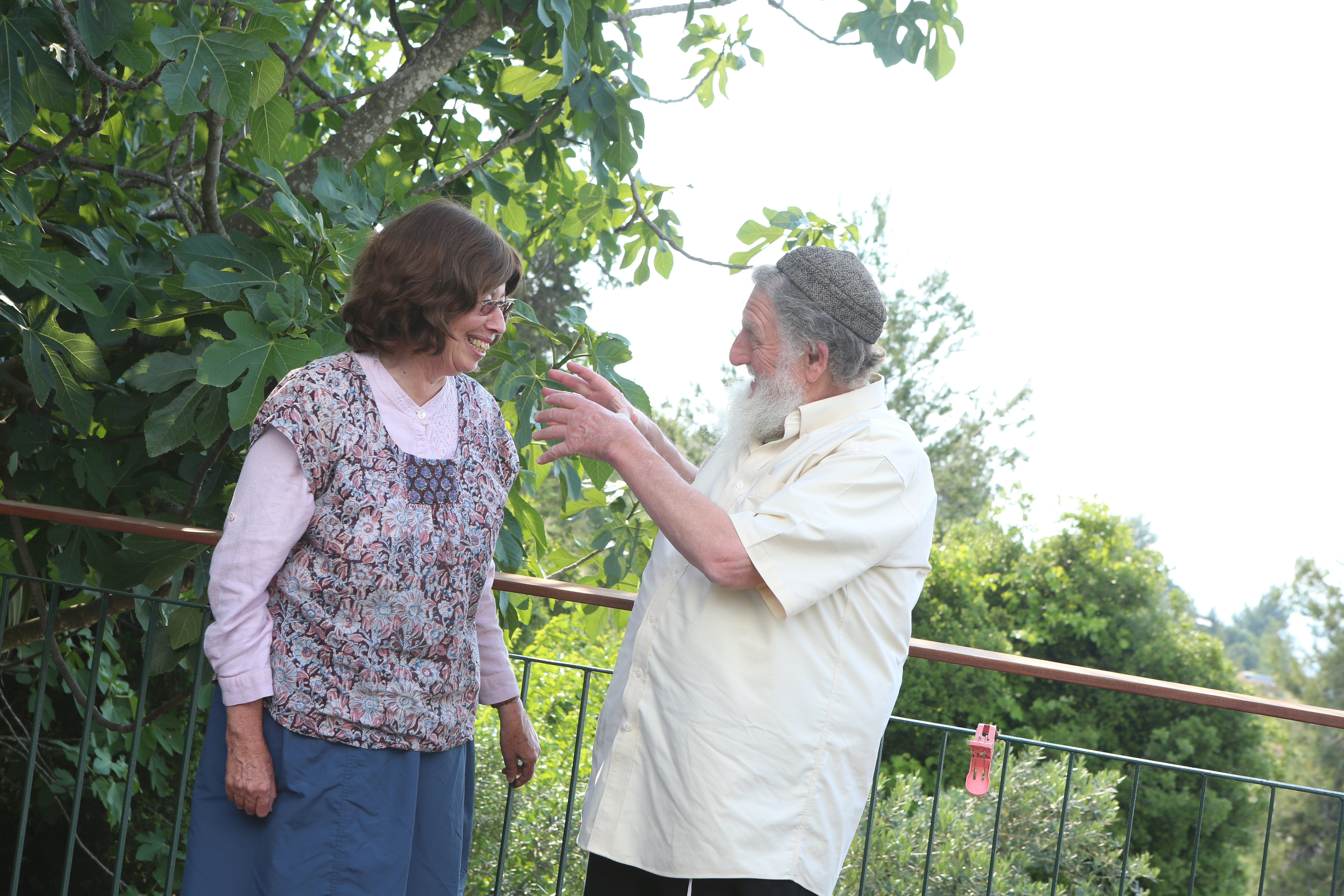 Laughter and humor on the porch of their Bat Ayin home
Laughter and humor on the porch of their Bat Ayin home
In 1975, Meir interviewed for a job as a teacher at a local public school, bringing eight years of experience with him. The position was his with one caveat: “Take your yarmulke off and you have a job,” the principal told the only Jew in an all black school.
“It took me too many years to put it on. I’m not taking it off,” Meir answered. He didn’t get the job. When he walked into his next interview in nearby PS 221, he laid the rule down: he comes with a yarmulke on his head. “Ben Schindler, a wonderful principal, hired me immediately.”
Meir introduced his students to a Moment of Silence. “Whenever the class got out of hand, I told them to take a moment and think about someone they love, someone who needs healing. It worked beautifully.” The Rebbe, he learned, was pleased with this.
Meir and Miriam deepened their relationship with the Rebbe. Their Crown Heights home became a hub, drawing an eclectic mix of personalities. Bob Dylan, Larry Kegan, and the Tzaddik of Leningrad (Izzy Kogan) were often at their Shabbos table.
But Meir hadn’t given up on his dream “to return home” to Israel. For a while, it faded in the business of life, but “the old flame was rekindled after we began visiting Israel in the 80s.” After a sabbatical year in Jerusalem in 1996, they began working towards a permanent move.
Bat Ayin—Hebrew for “apple of the eye” (“Keep me as the apple of thy eye,” Psalms 17:8)— was, for them, the perfect place to distill their accumulated spiritual wisdom and hitkashrut —connection. In 2003, after twenty-seven years on the gritty edges of Crown Heights, Meir and Miriam made aliyah.
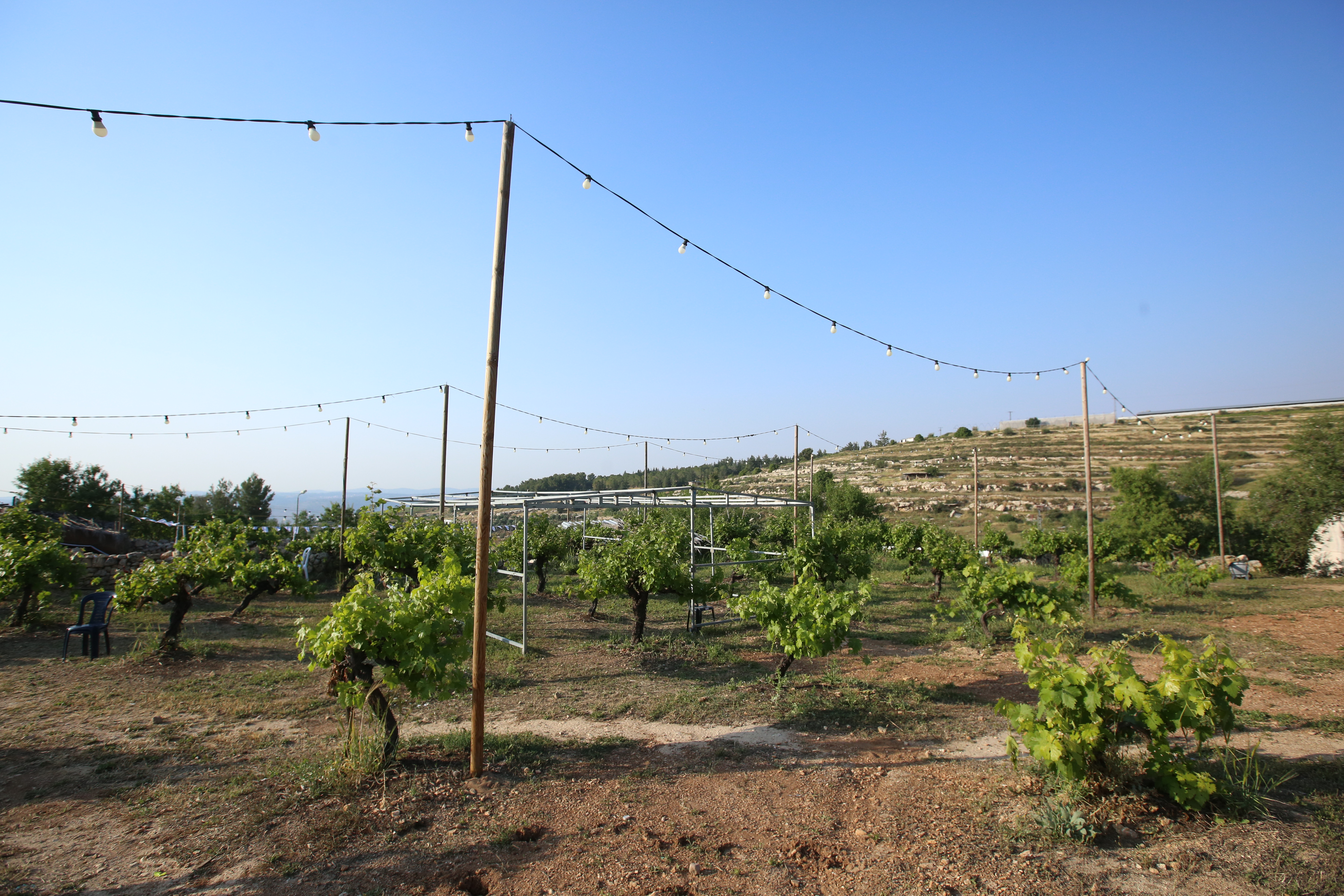 Some of Meir’s plantings
Some of Meir’s plantings
They started out in a small caravan on a bare desert hill. Four other couples whom they had met on their trips to Soviet Russia (sidebar) had emigrated and settled there. Meir planted trees, coaxing color and sweet fruit out of the hard, brown earth. In time, they expanded their caravan to make room for others, laying foundations deep in Bat Ayin’s bedrock.
THE REBBE’S “PARTISANS”
Miriam shows me the rooms. There are beds enough for fifteen and a generous table. “We have a lot of kids who come through, traveling to India. These kids are following the same kind of path that we trod,” Meir says.
At one of the first farbrengens (Chasidic gatherings) Meir attended, he listened wistfully as the Rebbe spoke about sending emissaries to Israel. “I had a certain pain,” he recalls. “I didn’t think I’d ever be a shliach for the Rebbe. We were older, we didn’t have the background in Yiddishkeit. I just didn’t think we’d ever have this opportunity.”
In 1985, the Rhodeses traveled to communist Russia on a mission for the Rebbe (sidebar). But it was in Crown Heights, Meir insists, that they became the Rebbe’s shluchim. “I was a shliach on Utica and President Street as much as any guy in Paris or Moscow. But we are different kind of shluchim. We are the Rebbe’s partisans,” he says, pronouncing the word pahr-tee-zahns.
The Rhodeses don’t preach. They don’t lecture. They don’t talk much either. Travelers come and go. Some become family. They get married and come back with their spouses and their children. Others just pass through.
Meir and Miriam aren’t creating programs. They aren’t building centers or throwing gala fundraisers. “We live like partisans,” Meir says, “with a simple wooden aron kodesh (ark) and broken luchos (tablets). We try to help another Jew. It’s the only way to stay connected to the Rebbe.”
As if lost in thought, he adds, “Some missions you share with your partner, some you do alone. Some you give to your kids if you can’t finish it. We don’t have children of our own. So we nurture the kids who come through here. They fulfill a need we have and we fulfill a need they have. It’s a beautiful relationship.”
A Siberian Husky chasing his sandaled feet, Meir shows me the fruit trees he’s planted in Bat Ayin. It is early April and the vine’s first buds are breaking. But the loquat clusters are ripe. He plucks one off the tree and offers it to me.
“You come to the world to make it a more a beautiful place. If you didn’t do that, what did you accomplish?”
The fruit’s flesh is succulent, tangy. Sweet juice runs down my chin.
“That’s the mission,” Meir says, squinting in the sunlight.
“Every soul knows that.”
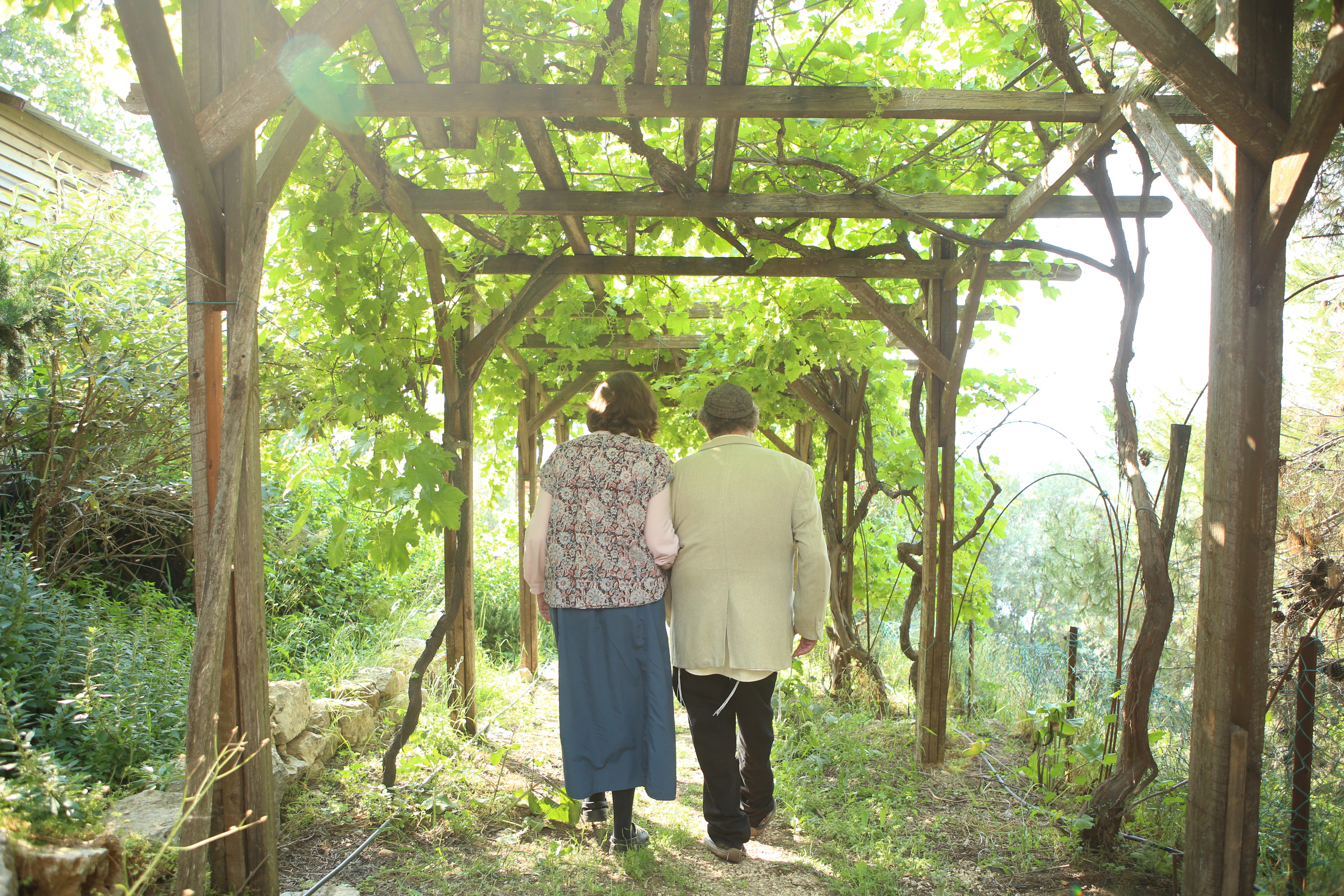 Under the grapevine
Under the grapevine
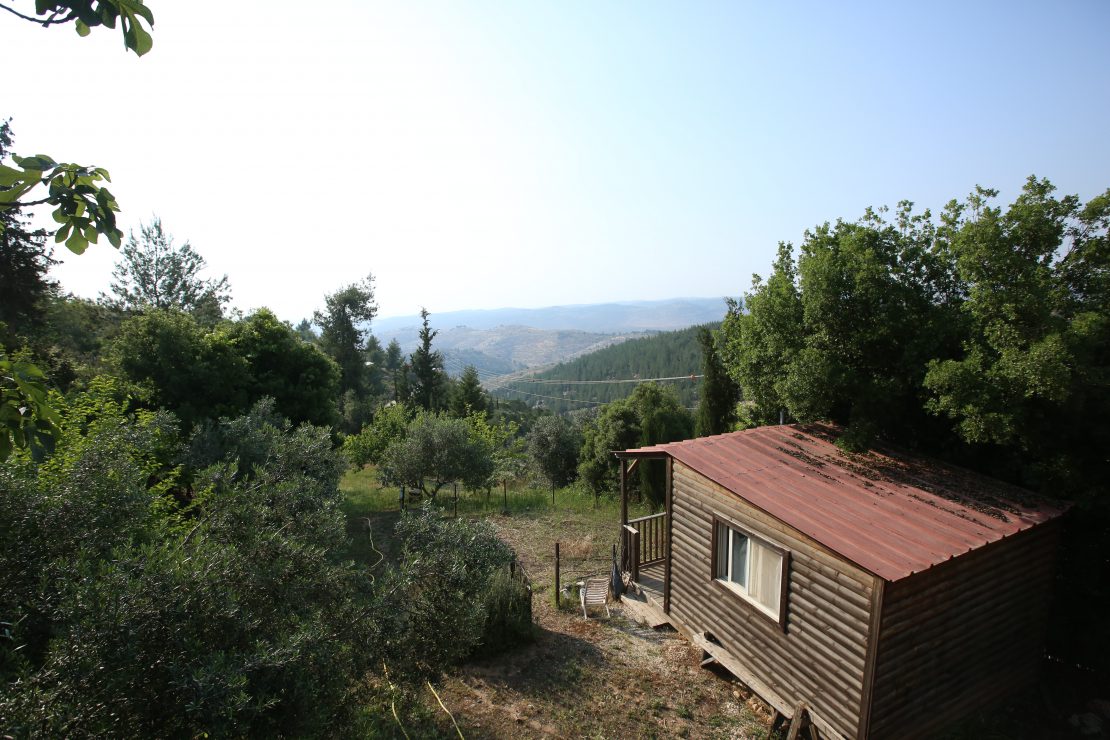
Faigie
Such a beautiful mission. May you go from strength to strength.
Bracha Adrezin
Dear Miriam,
Thank you much for your classes. You have been the most giving and sweetest.
Your humor is intoxicating and sometimes when you start laughing it sparks something deep within and starts a laughing jag within me. Also Love the treatment of trauma, it is in reality very logical. Having had a father as a psychologist obm and having been around psychotherapy (in Vienna) study, it creates another world. Although Freud borrowed heavily from the Gemara. But may be he didn’t know that himself. The teaching brings peace of mind, but also allows for creation (i.e. song, prose). This is where the Chocmah and Daas meet.
What a treat! Please G@D the dream is to come to Jerusalem to study at the center. And to Live in Eretz Yisroel. Where Hashem plants us.
Wishing you much Hatzlacha&Brachos in all that you do. May you go from strength to strength. May you see your garden blossom for you and your husband for many long years to come.
Best,
Bracha Adrezin
P.S. Really like your book shelf. Forgot to tell you.
Aron Kay
Dear Meir and Miriam
My daughter Rachel and I spent the 2nd Seder with you in 1990…
I met you either via Dr Laz or an Abbie Hoffman memorial in the village…
Anyway I think it’s cool that you confront the Palestinian hitchhikers with talk of peace…. there you have a captive audience!!!
I hope peace can happen there
Bonnie Bockl Joseph
I knew Meir for all of high school in Shorewood Wisconsin.. It was a totally different Michael Rhodes. I am happy for him that he found peace and a great view of is world and serenity.
Missing from this Garden of Eden are the Gazans next door starving due to Israels embargo.
How to you feel about this, Michael?
Yona Jeff Asbell
Dear Miriam & Meher,
Shalom Shalom and trust you are well and flourishing. i hope and would deeply appreciate your forwarding an email address or phone number, I just read your
beautiful all-embracing Torah infused words of your lives, fortunately leading to the late beloved and esteemed Rebe whose work and words you are so committed to living and sharing with so many precious Jewish souls. My beloved wife Sara has 2 very sensitive and naive nieces that were able to leave a cult and fortunately
were deprogrammed by a skillful deprogrammer; Batya & Rivka have considerably healed from the trauma since leaving this abusive cult and are leaving for Israel
in mid September. Can you recommend a Yeshiva in Jerusalem or Israel that is a warm, caring, nurturing and encouraging Hasidic community and forward to me
your email and or phone contact so they can reach out to you and spend some
important time with you and your community. Thank you very much.
Yona Jeff Asbell
Shalom Meir & Miriam & trust you are well and thriving in this incredible Bat Ayin spiritual community. Hashem gives us a certain number of years & days & breaths & I hope to be able to send you a letter. I would deeply appreciate your emailing me your mailing address because of some personal considerations needed to be shared in my letter that if I use info@berotbatayin.org, I sense if others read my letter, it would be crossing boundaries you would feel best not to be crossed.
My email address is whatreallymatters963@gmail.com. Thank you very much.
Shabat Shalom,
Yona Jeff Asbell
cell 646-753-0698